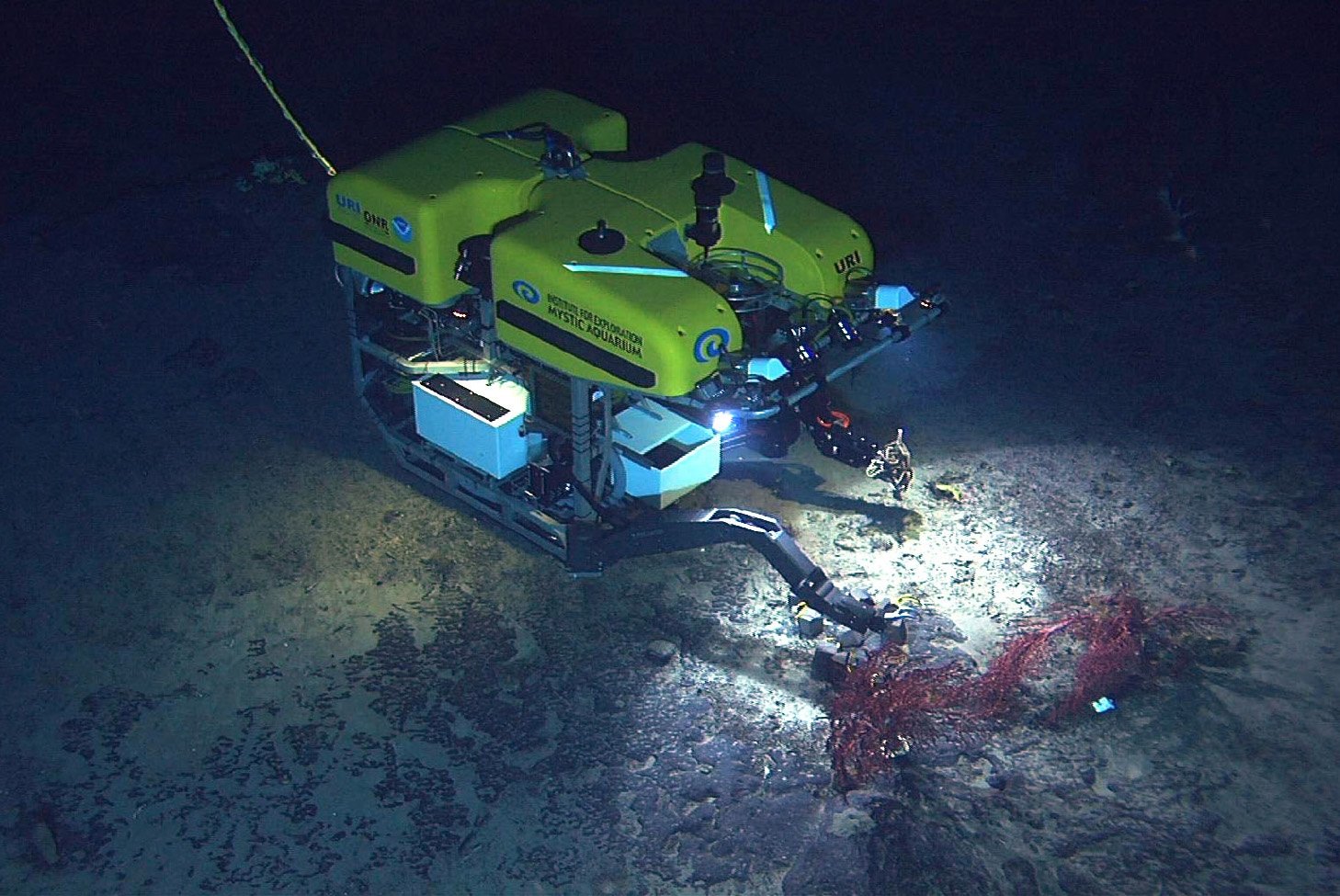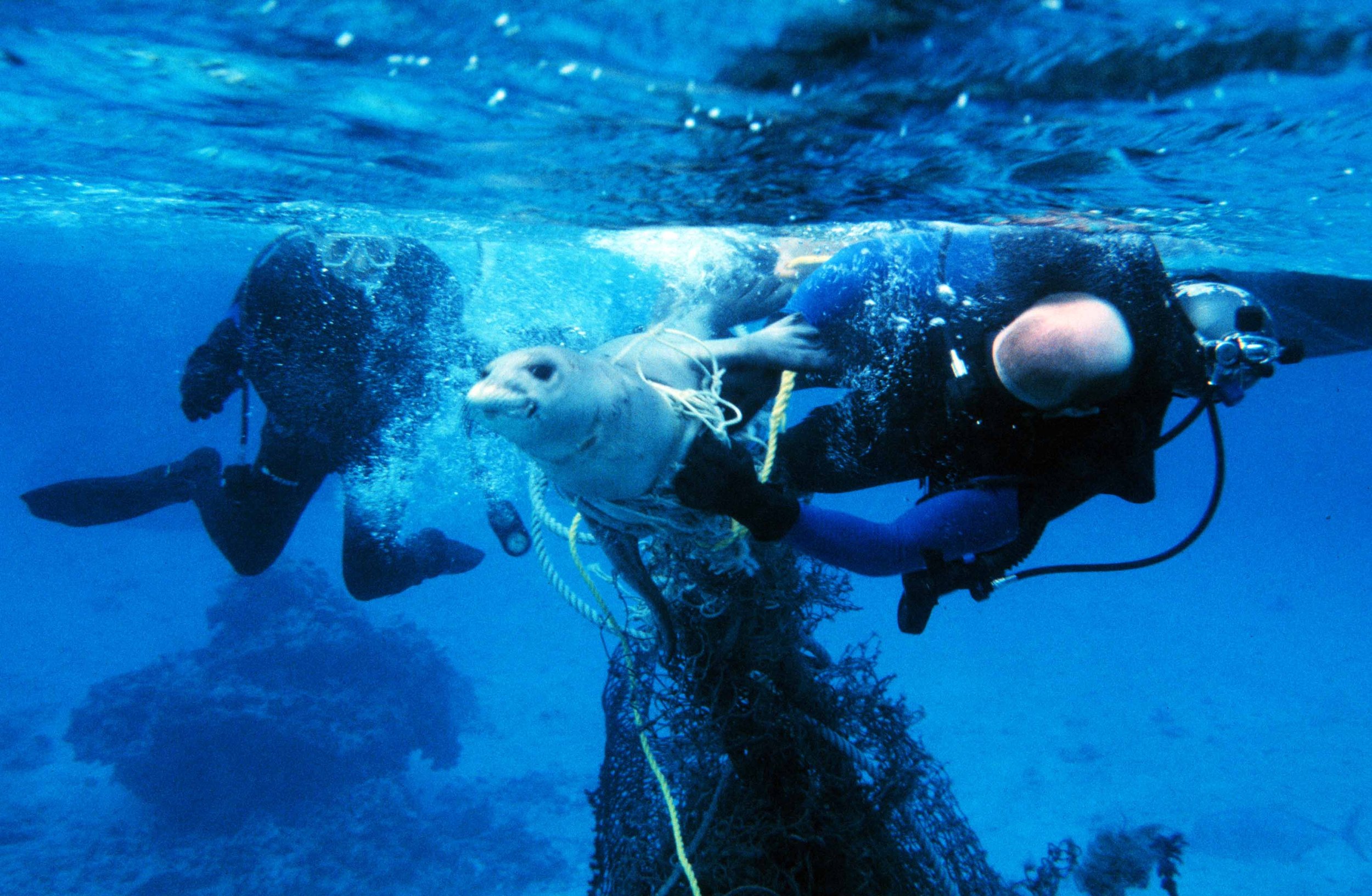ocean plastic: cleaning the ocean floor
If an estimated 99% of the plastic in the ocean is missing, one place it may well be is on the ocean floor and embedded in the sediment there. It is impossible to know just how much plastic is there but one estimate puts it at more than 14 million tonnes. The ocean floor is the most inaccessible part of our planet and cleaning it may seem an insurmountable challenge but there are some projects concentrating on clearing the ocean floor of macroplastics, such as fishing nets which have sunk to the seabed and are smothering and destroying marine ecosystems like coral reefs, as well as microplastics stemming either from products made of high-density polymers or from low-density polymers with biofouling on top.
The average depth of the ocean is 3,688 metres, the maximum depth is 10,983 metres, 95% of the ocean has yet to be explored and 80% of the ocean floor still to be mapped. The bathypelagic zone or deep ocean knows no sunlight, water pressure at the ocean floor reaches up to 600 times that at the surface, the temperature remains near freezing. Only 67 submersibles exist that can reach these depths and provide an idea of the environment there. We do however know that plastic has made its way there, you may perhaps remember pictures in the news of a fragmented plastic bag which was discovered in the Mariana Trench in 2018. Investigations of the digestive tracts of benthic marine life in the ocean trenches around the Pacific Rim at depths from 7,000 to near 11,000 metres tell a sorry tale: over 72% of the individuals examined contained at least one microparticle.

Credit: Mountains in the Sea Research Team; the IFE Crew; and NOAA/OAR/OER

Alex Mustard/Ocean Image Bank

Ray Boland, NOAA/NMFS/PIFD/ESOD

Dr. Dwayne Meadows, NOAA/NMFS/OPR.
Geomorphologists, sedimentologists, and geochemists are all involved in the study of the ocean's sedimentary record which can tell us about where plastics are settling. GlobSed, an updated global ocean sediment thickness map, was released in 2019, showing the distribution of sediment in the ocean. The map shows that sediment thickness increases with the age of the oceanic crust and is higher at high southern and northern latitudes and towards the Equator. The development of a mathematical formula to establish sediment thickness enables a good approximation of sediment thickness in oceanic basins through time. In the areas where sediment is thickest (thought to be as a result of turbidity currents - underwater avalanches driven by gravity), it is thought that larger concentrations of plastic are joining the sediment on the ocean floor.
Modelling what happens when a mixture of sand and microplastics emerge from an estuary into the ocean, scientists have observed that the fragments tend to get stuck among the sand grains and travel with them, falling off the continental slope down to the ocean basin. Their conclusions suggest that most of the plastic escaping the coastal circulation and arriving in the open ocean is being carried down to the depths by underwater avalanches and accumulating in deep sea canyons.
Scuba divers around the world are also working to clear up debris found on their dives ranging from individual items of litter to heavier items such as discarded fishing gear. 640,000 tonnes of ALDFG (Abandoned, Lost or otherwise Discarded Fishing Gear) is thought to be lost or abandoned in the ocean every year, making up about 10% of all marine debris. This is by far the most harmful form of debris because the nets continue to catch fish and trap marine mammals for decades after they have entered the marine environment.
Spotlight on SeaClear
Projects to clean the ocean floor are as yet few and far between. Aiming to be the first to use autonomous robots to search, identify and collect marine litter, the SeaClear project (short for SEarch, identificAtion and Collection of marine Litter with Autonomous Robots) run by the TU Delft, is a Horizon 2020 funded project using a combination of unmanned surface, aerial and underwater vehicles (USVs, UAVs and UUVs) to remove debris from the ocean floor in coastal areas. As a first step, the USV SeaCat uses a multibeam echosounder to scan the ocean floor and produce a 3D bathymetry map. This map is the reference basis to which all other information is added. The SeaCat serves as the 'mother ship', from which all other robots are deployed and powered. All resources involved in sensing, control, and artificial-intelligence components are hosted on the SeaCat.
UAVs with cameras are deployed to search for debris from the air in areas where the water is clear. UUVs are deployed to identify debris on the ocean floor using cameras and sonar. Any debris that is found is included on the reference map and identified using artificial intelligence and deep-learning object recognition techniques.
Thereafter debris is collected by the Tortuga using a gripper equipped with a suction device enabling it to retrieve litter even from challenging locations such as when lying among marine flora. The SeaCat then deploys a basket in which Tortuga deposits the litter for transportation to the shore.
As we have seen, the SeaClear system consists of multiple components which need to work reliably together under a multitude of different scenarios. A first testing phase is taking place in a computer simulation that can run many different scenarios in a short time, and without the risk of damaging any of the equipment.
When fully operational, the SeaClear system aims to detect and classify underwater litter with an 80% success rate and collect it with a 90% success rate at a lower cost to the deployment of divers. Two case studies are planned, one in a port situation with the Hamburg Port Authority and the other in the tourist area around Dubrovnik.
Spotlight on PADI’s Dive Against Debris™
Dive Against Debris is a global movement initiated by the Padi AWARE® Foundation and supported by Seiko. According to their website, the movement aims to improve the health of ocean ecosystems through volunteer efforts and provide valuable information about underwater debris to help inform policy change.
The citizen science program empowers scuba divers to remove marine debris from the seafloor and to collect data on the types, quantities and locations of materials collected.
Over 2 million pieces of debris have been removed from the seabed since the programme began and over 10,000 marine animals which were entangled have been freed.
In order to participate in a dive against debris, you need to have the PADI Open Water Diver (or equivalent) certificate, to be at least 10 years old and to hold a Dive Against Debris Speciality Certification. Courses are offered by PADI.
PADI encourages divers to help keep their local marine environment free of debris and contribute to the largest global underwater database in the world.
They have strict criteria to ensure that their database only contains relevant information pertaining to debris on the sea floor.
See PADI AWARE’s Marine Debris page for more information.
One of their latest projects is a cooperation with Malaysian dive operators in one of the most ambitious cleanups ever taken on by the dive community. Working with The Ocean Cleanup, PADI is calling upon dive centres in Malaysia to take part in three surveys to collect marine debris data to perform the research study. Their plan is to collaborate with local dive shops and communities to get a better understanding of local conditions, proposed survey sites and training needs from dive centres.
Spotlight on 4Ocean
According to their website, 4ocean was established with the idea of helping local fishermen whose livelihoods have been negatively impacted by plastic pollution. It works with boat captains and fishers in communities, hiring them as cleanup crew members to recover plastic and other harmful debris from the ocean, rivers, and coastlines in Florida, Bali, Haiti, and Guatemala, and recovers millions of pounds of trash from the ocean, rivers, and coastlines every year.
One of their signature projects is clearing up the Osborne Reef, an artificial reef created off the coast of Florida in the early 1970s at a time when enormous numbers of used tyres were piling up in landfills and illegal dump sites. At that time a group of fishers suggested using the tyres to expand an artificial reef off the coast of Florida, believing that it would encourage new coral growth, attract big game fish, improve local biodiversity, and benefit the local economy. The idea was welcomed by the public and was ultimately endorsed by state and local governments as well as the US Army Corps of Engineers. As a consequence over a million used car tyres were bound together with steel clips and nylon straps and dropped into the Atlantic Ocean. The reef project has been an abject failure. Microfibres from tyres are already one of the main pollutants of the ocean so introducing a million tyres into the marine environment was a terrible mistake. To make matters worse, the straps binding the tyres together corroded over time and the tyres spread out over the ocean floor, damaging coral reefs and marine ecosystems.
4ocean is currently working to recover these tyres in a designated area just north of the original drop site where hundreds of thousands of loose tyres have migrated. Recovery is challenging: once pulled out of the sand the tyres are threaded onto a 6-foot metal cable attached to a lift bag, which can lift about three tyres to the surface at a time. The tyres are then sent to a waste management facility to be converted into energy or used to make 4ocean Osborne Reef bracelets. 4ocean's Osborne Reef work is introduced here:
